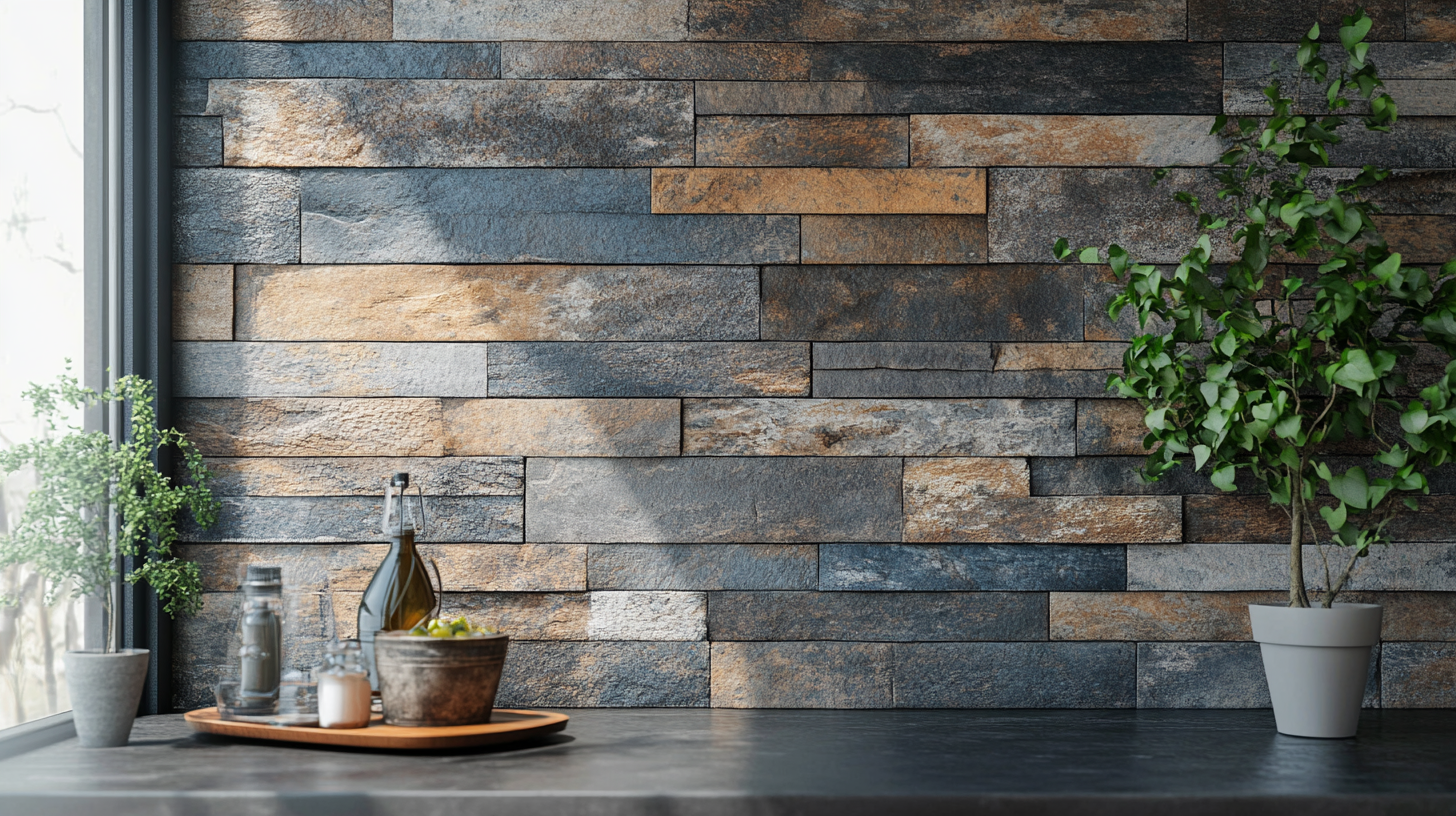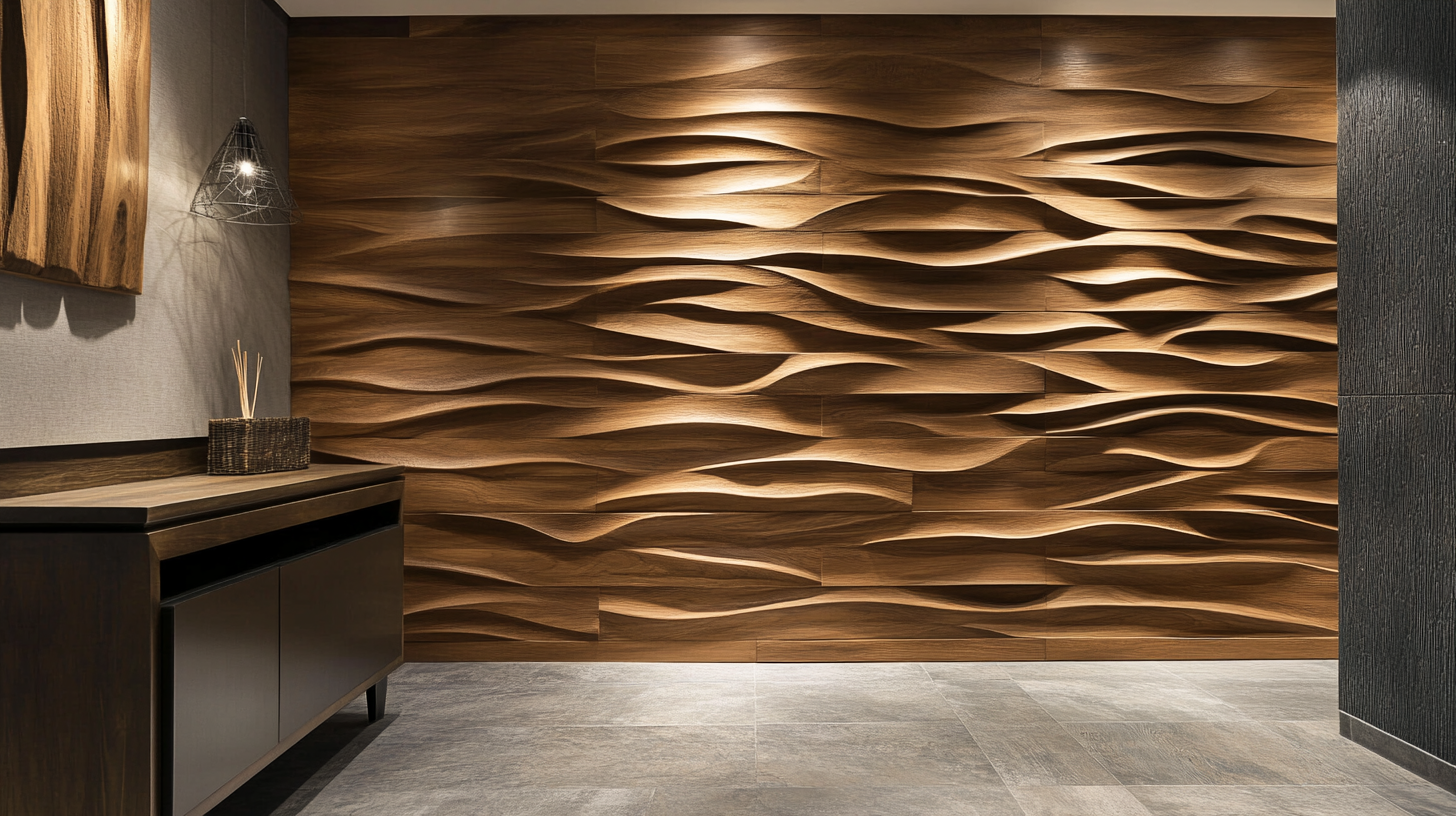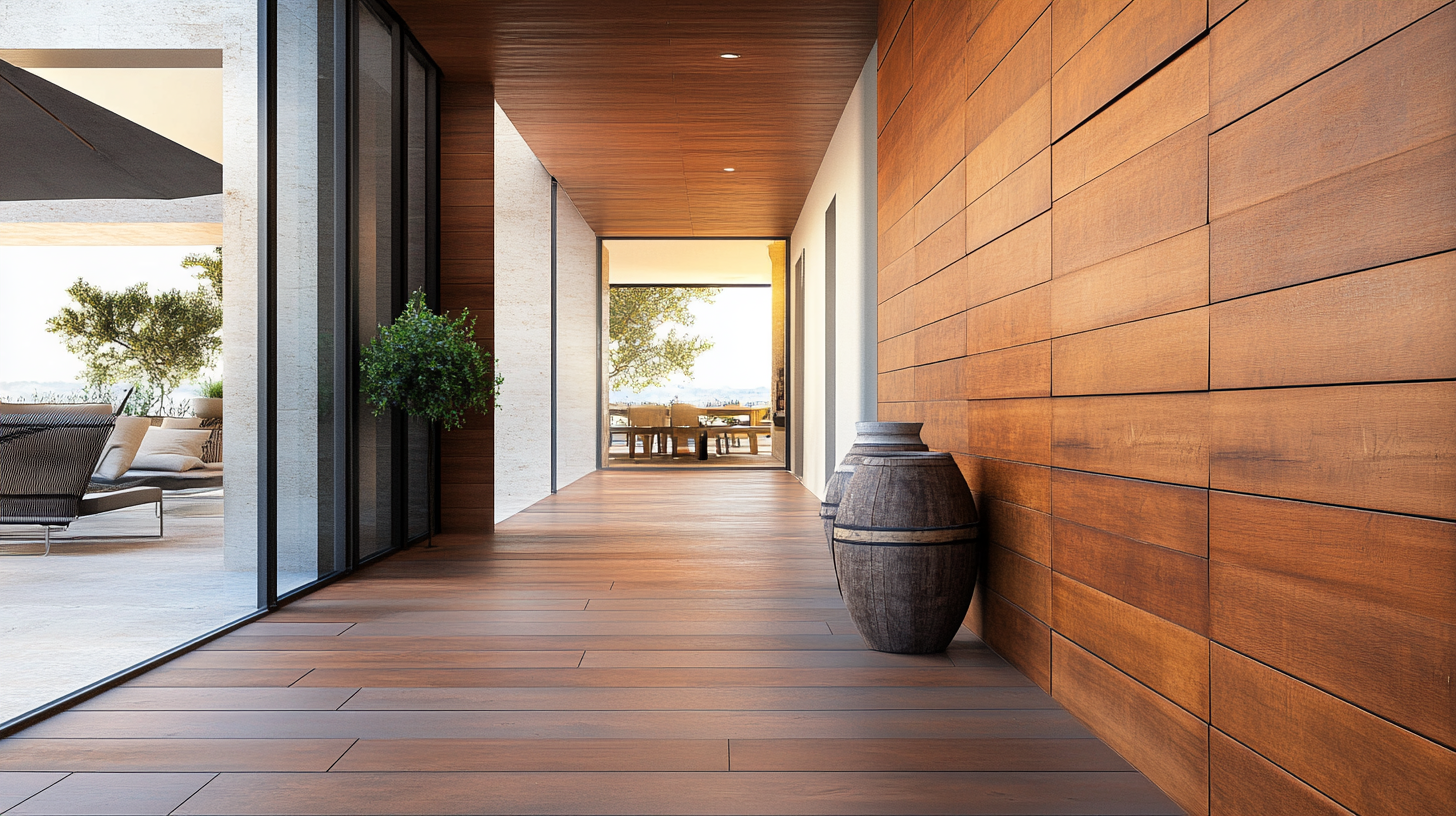In the quest to create unique and inviting spaces, wall cladding has emerged as a transformative design element that can elevate any environment. Whether you're looking to add a touch of elegance to your living room, bring warmth to your office, or infuse a bit of character into your commercial space, the right wall cladding choice can make all the difference. From traditional wood panels to sleek metal sheets, the innovative options available today allow homeowners and designers alike to express their individual style while enhancing the functionality of a space. This blog will explore various innovative wall cladding materials and techniques that not only enhance aesthetic appeal but also offer practical benefits like insulation and durability. Join us as we delve into the exciting world of wall cladding and discover how these choices can truly transform your space.

The world of interior design continuously evolves, and one of the most exciting innovations in wall cladding is the advent of 3D wall panels. These panels offer a unique opportunity to infuse your space with depth and visual interest, transforming flat surfaces into dynamic features that draw the eye. Available in various materials such as wood, metal, and eco-friendly composites, 3D wall panels provide both aesthetic appeal and versatility, making them an ideal choice for residential and commercial interiors alike.
Incorporating unique textures into your design scheme can create a multidimensional experience that engages the senses.3D wall panels come in countless patterns, from geometric shapes to organic curves, allowing for endless customization. Whether you desire a sleek modern look or a rustic charm, these panels can serve as a striking focal point or complement your existing decor. Additionally, their acoustic properties can enhance the ambiance by reducing noise, making them perfect for spaces like offices, restaurants, or homes. Embrace the innovation of 3D wall panels and let your walls tell a story of style and creativity.

In recent years, the demand for sustainable materials in architecture has surged, with innovative wall cladding options leading the way in eco-friendly design. A significant advancement is the adoption of waste-based bioplastic wall panels, which leverage organic and plant-based materials to enhance acoustic, thermal, and structural efficiency. According to recent studies, these bioplastic cladding units not only reduce waste but also contribute to a healthier indoor environment by minimizing harmful emissions typically associated with conventional materials.
Moreover, materials like hempcrete, bamboo, and cob have emerged as frontrunners in sustainable home building. Hempcrete offers excellent thermal performance with a carbon-negative footprint, while bamboo's rapid growth makes it a highly renewable resource. Cob, made from a mixture of clay, sand, and straw, showcases natural insulation properties, keeping indoor spaces comfortable year-round. As per a report by the International Society for Bamboo and Rattan, bamboo can sequester up to four times more carbon dioxide than traditional timber species, highlighting its potential for environmentally conscious construction.
The integration of these materials not only transforms the aesthetics of a space but also aligns with a growing commitment to sustainability in architecture. By choosing walls clad in eco-friendly options, homeowners and builders are making a conscious decision to support a healthier planet while enjoying the modern, stylish benefits of contemporary design.
When selecting wall cladding, the choice of color can significantly influence the mood and atmosphere of a space. Color psychology plays a crucial role in interior design, as different hues evoke distinct emotions and reactions. For instance, warm colors like reds and yellows can energize a room, making them ideal choices for communal areas such as kitchens or living rooms where social interaction is encouraged. These colors can stimulate conversation and create a lively, inviting environment.
Conversely, cooler shades such as blues and greens promote tranquility and relaxation. They are perfect for spaces intended for rest and rejuvenation, like bedrooms or home offices. Incorporating these calming tones through wall cladding can help reduce stress and facilitate focus. Additionally, consider the light in the room—natural and artificial light can alter how colors are perceived, making it essential to test samples before making a final decision. By understanding the psychological impact of different colors, you can strategically choose wall cladding that not only enhances the aesthetic of your space but also supports the desired atmosphere.

Mixing materials for wall cladding can create a dynamic and eye-catching aesthetic that enhances any space. Combining elements like wood, metal, and stone not only adds visual interest but also allows homeowners to express their personal style. For instance, pairing warm, natural woods with sleek metals can establish a contemporary yet inviting atmosphere, while the rugged texture of stone can bring an earthy balance to more polished finishes. This fusion of materials is not only visually appealing but also practical, as each element can provide unique benefits such as durability and insulation.
As we look ahead to 2025, trends in home renovation continue to evolve. Similar to the rising popularity of waterfall countertops in kitchens—where countertops seamlessly flow down the sides—integrating materials in wall cladding offers a fresh twist on traditional designs. Homeowners are increasingly seeking ways to blend style and functionality, and the innovative combinations of materials can enhance curb appeal while reflecting the latest design trends. Whether revitalizing a small house front or transforming a living area, the thoughtful mixing of materials can lead to stunning, cohesive spaces that resonate with personal style and modern living.
| Material Type | Characteristics | Benefits | Design Ideas |
|---|---|---|---|
| Wood | Warm, natural texture | Sustainable, versatile | Accent walls, rustic themes |
| Metal | Sleek, modern appearance | Durable, low maintenance | Industrial styles, creative patterns |
| Stone | Timeless, robust texture | Elegant, fire-resistant | Classical themes, outdoor spaces |
When it comes to home improvement, transforming your walls doesn’t have to break the bank. With a few creative DIY ideas, you can enhance the aesthetic of your space without spending a fortune. One of the most effective ways to achieve this is through the use of reclaimed wood. By sourcing pallets or leftover lumber, you can create stunning accent walls that not only add character to your home but also tell a beautiful story of sustainability. Simply sand down the wood and arrange it in a pattern that suits your style for a rustic, yet modern feel.
Another budget-friendly option is to use peel-and-stick wallpaper. This versatile solution comes in a variety of designs, allowing you to easily change the look of a room without the permanence of traditional wallpaper. Ideal for renters or those who love to refresh their decor regularly, peel-and-stick wallpaper can elevate your space instantly. Whether you choose bold patterns or subtle textures, the ease of application means you can achieve a professional finish without the cost of hiring a contractor. With these DIY cladding ideas, personalizing your walls has never been easier or more affordable.
